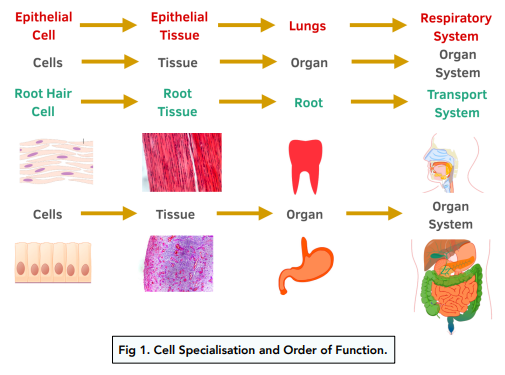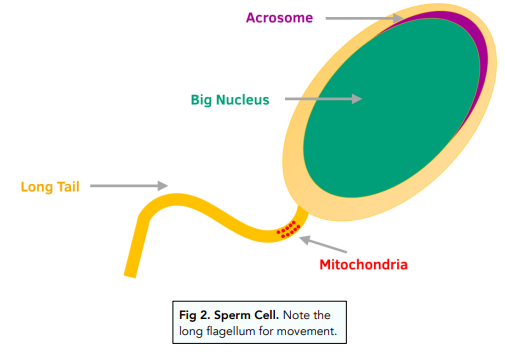Introduction to Cells - Specialised Cells: Sperm Cells (GCSE Biology)
Specialised Cells: Sperm Cells
Specialisation
• Cells can specialise. Cell specialise, which means that they develop as the organism does, in order to perform a specific function. The cells become adapted to a particular function.
• Cells can work by themselves or as part of a team. Cells can work with other similar specialised cells to form a tissue. They can also work with other types of specialised cells and tissues to form an organ. Many different organs work to form an organ system.

Examples of Specialised Cells
Sperm Cells
Sperm cells are used in reproduction. Sperm cells transfer genetic information from the male parent to the female parent.
How are sperm cells adapted to their function?
• Sperm cells are adapted to fertilisation. The adaptations of sperm cells are listed below.
• Acrosome – a sperm has an acromsome at its head. This contains enzymes that are used for the digestion of the outer layers of the egg cell, to allow the sperm to fuse with the egg cell.
• Long tail – They also have a long tail to help it swim through the the female reproductive system.
• Mitochondria – The sperm cell requires energy to move. This is provided by mitochondria in the mid piece.
• Big nucleus – a sperm cell has a big nucleus, which holds the genetic information.

FAQs
Cells are the basic building blocks of life. They are the smallest unit of an organism that can perform all of the functions necessary to sustain life.
Specialised cells are cells that have specific functions within the body. They have unique structures and perform specific tasks.
Sperm cells are a type of specialised cell that are found in the male reproductive system. Their main function is to fertilize an egg during reproduction.
Sperm cells are developed in the testicles. This happens in small tubes called the seminiferous tubules.
Specialised cells are so-called because they play a specific part in the function of the body. The sperm cell’s function is to fertilise the female egg and so are classified as specialised cells. Sperm cells have a nucleus that contains genetic material.
A sperm cell has a head, a mid-piece, and a tail. The head of the sperm cell contains the nucleus, which contains genetic material. The mid-piece contains mitochondria, which provide energy for the sperm cell. The tail is used for movement and helps the sperm cell reach the egg.
Sperm cells reach the egg through movement of the tail and the help of reproductive fluids. Once they reach the egg, they penetrate the egg’s outer layer and release their genetic material into the egg. This process of fertilization results in the formation of a zygote, which will eventually develop into an embryo.
Sperm cells are important for GCSE biology students to know about because they are a type of specialised cell and they play a crucial role in reproduction. Understanding the structure and function of sperm cells will help students better understand the reproductive system and the process of fertilization.






Still got a question? Leave a comment
Leave a comment